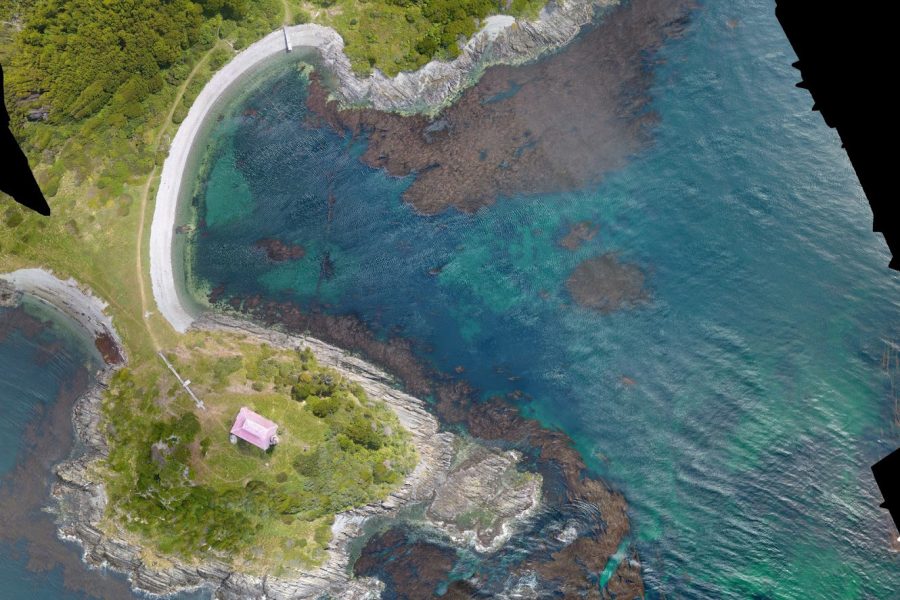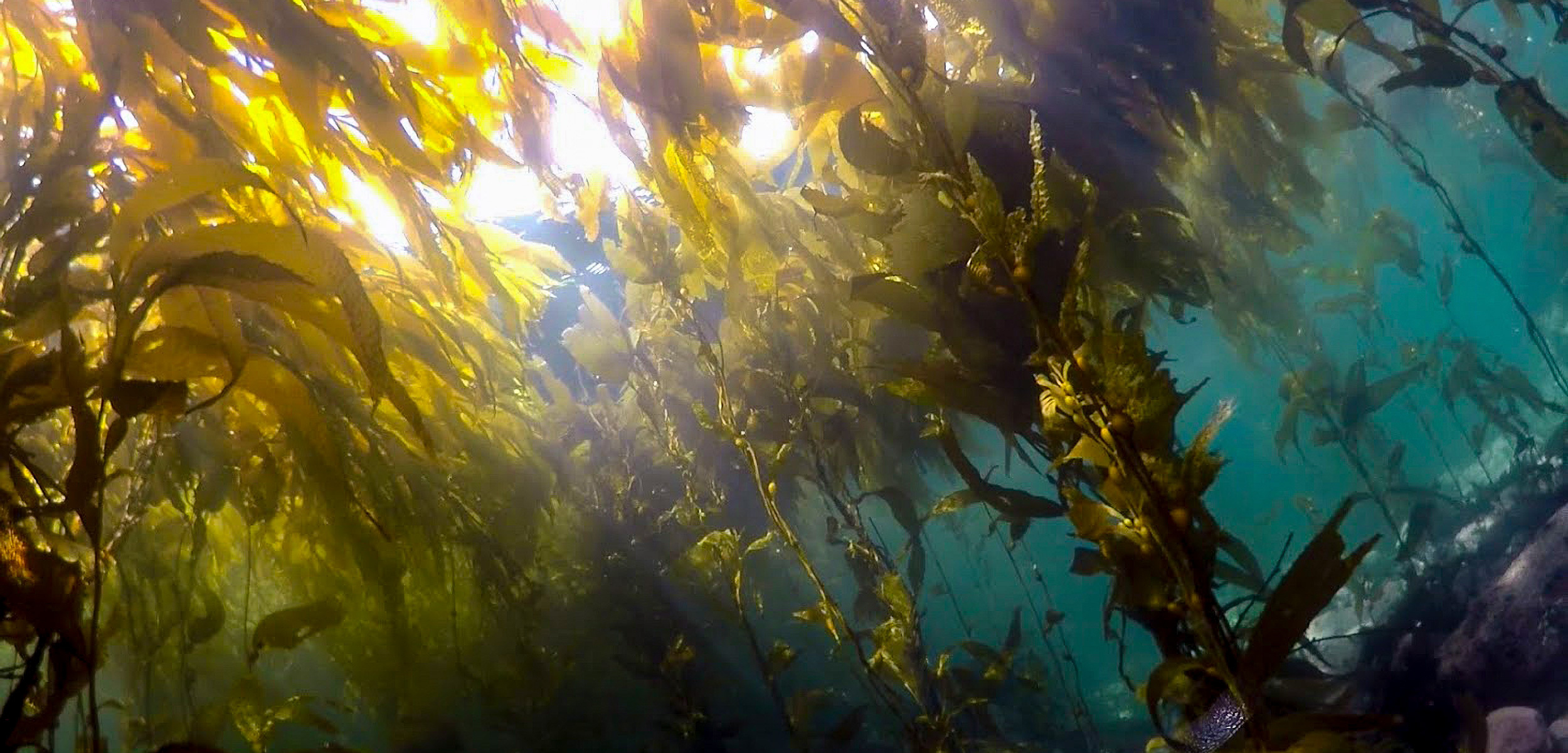Chile’s Kelp Forests Seem Nearly Unchanged Since the Voyage of the Beagle
In a changing world, South America’s subantarctic kelp forests hold firm.
Article body copy
Biting winds sail off the Pacific past craggy peaks and seaside cliffs. Below, the olive-green and brown tangles of giant kelp canopies swirl and sway just under the ocean’s surface. This is Chile’s Magallanes Region, situated along the frigid southwestern tip of South America, and here the rhythmic lapping of waves makes time feel like an unending loop, never moving forward. This is especially true for the kelp forests—they’ve been here, seemingly unchanged, for centuries.
With kelp forests around the world declining because of climate change and overharvesting, the reason why Chile’s subantarctic giant kelps have persisted so well is a mystery. It’s one that scientists, including Alejandra Mora Soto, a Chilean biogeographer at the University of Oxford in England, are just beginning to unravel.
Giant kelp is the world’s largest algae, capable of growing dozens of meters long. The species is found in cool coastal waters in both the northern and southern hemispheres and is the most widely distributed kelp on Earth. Mora Soto was entranced by the lush Chilean kelp forests and wanted to know how they had changed over time. But these forests have been relatively unstudied, and there was very little information about their geographical extent.
Using a combination of satellite and aerial drone imagery, Mora Soto and her colleagues mapped the kelp forests off Chile and those around the Falkland Islands and South Georgia Island. But to see how much they had changed, she also needed to step back in time. Mora Soto had read about the same kelp forests in Charles Darwin’s Voyage of the Beagle. She examined old nautical charts of the region, including those created by the Beagle’s captain, Robert FitzRoy, to see how the forests had changed over the past 200 years. When she compared these older charts—which still smelled like the sea—with the modern ones, they were strikingly similar. Many of the 300 subantarctic kelp forests in the survey have been growing in the same place, covering nearly the same area, for almost two centuries.

Researchers compared images taken by drone, such as this one, with older nautical charts to see how the distribution and size of kelp forests had changed over time. Image courtesy of Alejandra Mora Soto
But why were these monstrous algae so persistently plentiful?
Mora Soto and her team developed a list of characteristics, such as the wave exposure, currents, and steepness of the sea bottom, that could potentially influence the size of the kelp forests. Comparing these factors with forest size, they found that in many areas, forests that face ocean currents whipping past the region are larger than forests in more sheltered invaginations of the coast. This may be because water movement and turbulence agitate nutrients in the environment, which the kelps absorb.
Kelp forests also seem stable in the region’s quiet fjords, clinging to the vertical walls of cliffs as they plunge into the depths. Here, freshwater runoff from melting glaciers causes the water to be murkier, with more variable salinity, than locations on the outer exposed coast. Previous research suggests that the kelps living in fjords have adapted to these changing conditions by evolving workarounds that aid photosynthesis, allowing them to persevere as the glaciers above them liquefy.
But the main reason for South America’s southernmost kelp forests’ long-term persistence is that the region has had a relative lack of marine heatwaves, Mora Soto says. Giant kelp suffers once ocean temperatures reach around 15 to 17 °C. The heat can partially cut off the kelp’s supply of nutrients by dampening upwelling from deep waters. But the subantarctic kelps don’t appear to have experienced these temperatures in recent decades, in contrast to other kelp ecosystems around the world.
Adriana Vergés, a marine ecologist at the University of New South Wales in Australia who was not involved with this research, says that if researchers can identify the factors that have helped these southern kelp forests persevere, they can potentially export that knowledge to other kelp ecosystems.
“There’s a lot that we can learn from pristine ecosystems,” says Vergés. “If we want to truly understand the resilience of kelp forests, studying systems that have been persistent and well preserved for centuries can be immensely useful.”
However, giant kelp ecosystems vary considerably throughout their global range, so the lessons that can be drawn from Chile’s unexpectedly hardy kelp forests may be limited.
“The only thing in common for kelp forests are the kelp itself,” says Mora Soto, noting that unlike their counterparts along the Pacific coast of North America, the southern kelp forests don’t have any sea otters, salmon, or herring. Because southern forests have food webs that include different species, it is difficult to compare the ecology of kelp forests across hemispheres.
Cayne Layton, an ecologist at the University of Tasmania in Australia who also wasn’t involved in the study, adds that the survey only looked at the kelp part of the kelp ecosystem. Anything else that may have changed, such as the abundances of species living in the ecosystem, wouldn’t have been detected by this study.
Though the kelp itself appears to have been stable for the past 200 years, it is facing new challenges. Local salmon aquaculture operations in particular are a potential threat. The excess food and animal waste from the fish farms causes an influx of nutrients, which may have a hand in driving massive toxic algal blooms.
In the summer of 2021, the Argentinian province of Tierra del Fuego banned open-net-pen salmon farming in Patagonian and subantarctic island waters. Mora Soto says Chile should do the same. Chile has more kelp forests than almost any other country in the world, she says, “and we’re not protecting them.”

